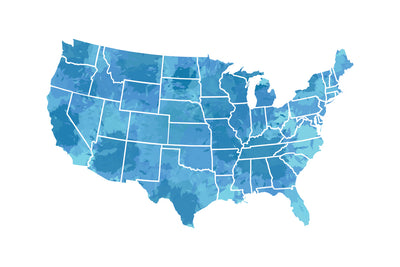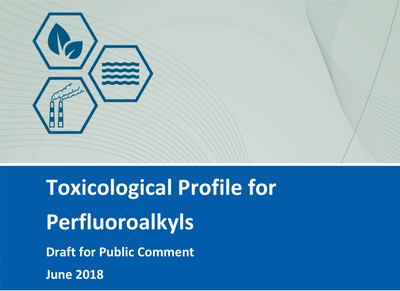Water Quality InformationWritten By Actual Experts
RSSPFAS Water Filters for New York State

PFAS Water Filters for Easton, Massachusetts

Analies Dyjak, M.A. | Head of Policy
Recent testing requirements in the State of Massachusetts have forced local governments to take a closer look at the safety of their drinking water. These new requirements have revealed that Easton, Massachusetts, has elevated levels of PFAS in their tap water. This article will address what PFAS compounds are, the levels in Easton drinking water, and water filtration brands that actually remove them.
PFAS in Easton, Massachusetts
The City of Easton, Massachusetts recently reported that PFAS are present in the city’s drinking water supply. State-level regulations of PFAS chemicals are relatively new, particularly in Massachusetts. Municipal water supplies were not required to even test for PFAS compounds until January 2021, when the state implemented these requirements. Up until that point, people in Easton and many other municipalities in Massachusetts did not know they were being exposed to this potentially cancer-causing chemical.
In October, 2020, the Massachusetts Department of Environmental Protection set an enforceable standard of 20 parts per trillion for the sum of six PFAS compounds in drinking water. The six compounds, called PFAS6, are: PFOS, PFOA, PFHxS, PFNA, PFHpA, and PFDA. This regulation means that if a water sample exceeds 20 parts per trillion for all six compounds, that the municipal provider is in violation of the state law. The table below shows elevated levels of PFAS in Easton source water. A more detailed and thorough analysis of these results can be found on the Easton, MA, website dedicated to PFAS testing.

What Are Per and Polyfluoroalkyl Substances?
Per and Polyfluoroalkyl Substances (PFAS) are a category of harmful compounds that can be found in drinking water sources across the country. PFAS can take hundreds of years to degrade in the environment which is why you may see them referred to as ‘forever chemicals.’ PFAS are not currently regulated at the federal level, but some states have created regulations or monitoring criteria, including Massachusetts. They are known to increase the risk of cancer, increase cholesterol, increase the risk of miscarriage by 80-120%, and several other negative health outcomes. According to the National Institute of Health, over 4,700 different PFAS variations have been used in some type of manufacturing since the 1950’s.
Is 20 ppt Safe?
There’s a bit of uncertainty around the “safe level” of exposure to PFAS compounds. There are only a handful of studies that assess associated health impacts, and most agree that more research is necessary to make a determination. In 2016, EPA set a non-enforceable Health Advisory Level of 70 parts per trillion for combined PFOA and PFOS. More recent data suggests that this level is far to high to provide meaningful protection against a range of negative health impacts. A recent study also found that a “safe level” or PFAS could be as low as 0.1 parts per trillion. Although the Massachusetts PFAS standard is on the lower end of state limits, our team would rather see even less PFAS allowed in municipal tap water.
Not All Water Filters Remove PFAS
If you live in Easton and you’re looking for a solution, it’s important to understand that not all water filters are able to remove PFAS chemicals. Duke University completed a study in 2020 that tested various filtration brands and their ability to remove PFAS from drinking water. The results found that popular brands including Brita and Pur did not do a good job of removing PFAS compounds. Refrigerator filters tested by the Duke research team, including; Samsung, Whirlpool, and GE, also failed to remove PFAS. The full results of this study can be found here. Hydroviv filters are both NSF certified and third-party tested to remove PFAS chemicals. To request our full testing and removal data, please email hello@hydroviv.com.
Other Articles We Think You Might Enjoy:Yale: PFAS Increase The Risk of Miscarriage by 80-120%
PFAS Update: Spring 2021
Why Do Military Bases Have High Levels of PFAS Chemicals?
PFAS: Everywhere We Look, We Find It

Breaking: ATSDR Releases Toxicological Profile for Perfluoroalkyl Substances

Analies Dyjak | Policy Nerd
The Agency for Toxic Substances and Disease Registry (ATSDR) just released a draft toxicological profile for Perfluoroalkyl Substances such as PFOA and PFOS. This category of emerging contaminants have flooded news headlines this past year, even though they've been persistent in the environment since the 1950’s. PFOA and PFOS are ingredients used in the production of non-stick materials like Scotchgaurd, Teflon, and firefighting foam. The risk to human health is "unknown" but exposure has been linked to various types of cancer, developmental issues, and preeclampsia in laboratory animals.
June 20, 2018 ATSDR Toxicological Profile for Perfluoroalkyls
Municipalities across the country have been demanding that government agencies expedite toxicological reports for this dangerous class of contaminants. Wilmington, North Carolina and several Michigan municipalities are just some of the locations that have been severely impacted by perfluoroalkyl contamination. Unfortunately, GenX, the most popular PFAS was not included in this particular toxicity study. This toxicological profile included provisional Minimal Risk Levels for both PFOA and PFOS. A Minimal Risk Level (MRL) is a non-enforceable standard, similar to an EPA health advisory level. The Agency for Toxic Substances and Disease Registry recommended reducing EPA’s non-enforceable health advisory from 70 parts per trillion to 20 parts per trillion for drinking water. This means municipalities across the country may be in exceedance with this new health recommendation, so people should stay current with public notices in their area.
Are Perfluoroalkyls Now Regulated?
It’s important to note that this toxicity study does not mean that PFOA and PFOS contaminants are now regulated. The Agency for Toxic Substances and Disease Registry can only make recommendations and provide scientific data regarding this class of contaminants. It’s now up to regulatory agencies to comb through these data and make decisions to ensure that public health is protected. The regulatory process in this country, especially for toxic substances, can take upwards of decades. A regulation proposed by EPA or CDC could take years to draft and even longer before it’s enforceable.
Our Water Nerds are working around the clock to help make sense of this 852 page document. We’ll be reviewing the document and providing information on our Youtube, Facebook and Twitter accounts. Make sure to subscribe and follow Water Nerd TV on Facebook to stay up to date!
Other Articles We Think You Might Enjoy:Everything You Need To Know About PFAS, PFOA, and PFOS
GenX Contamination in North Carolina
Recap of The 2018 PFAS Summit





